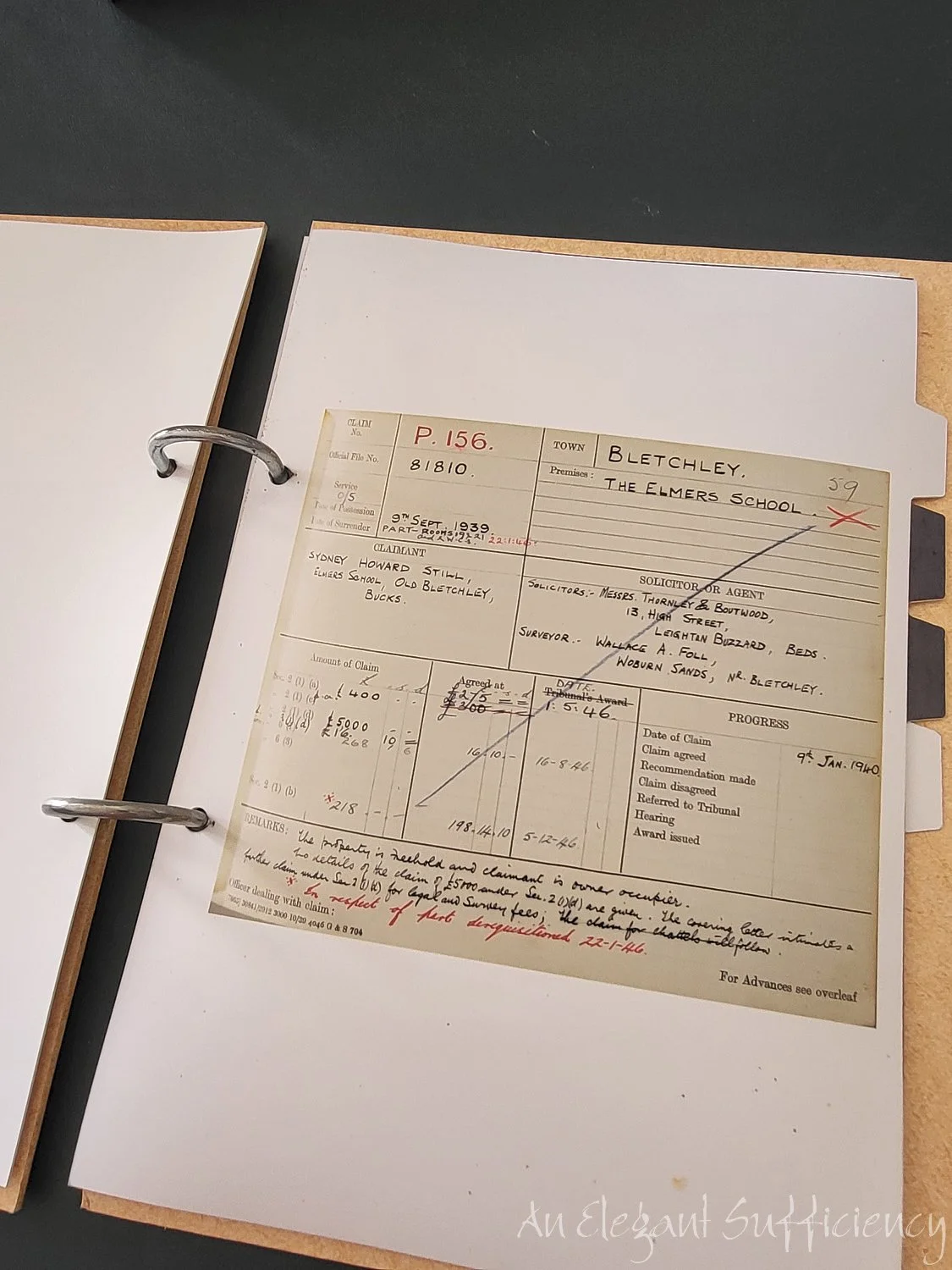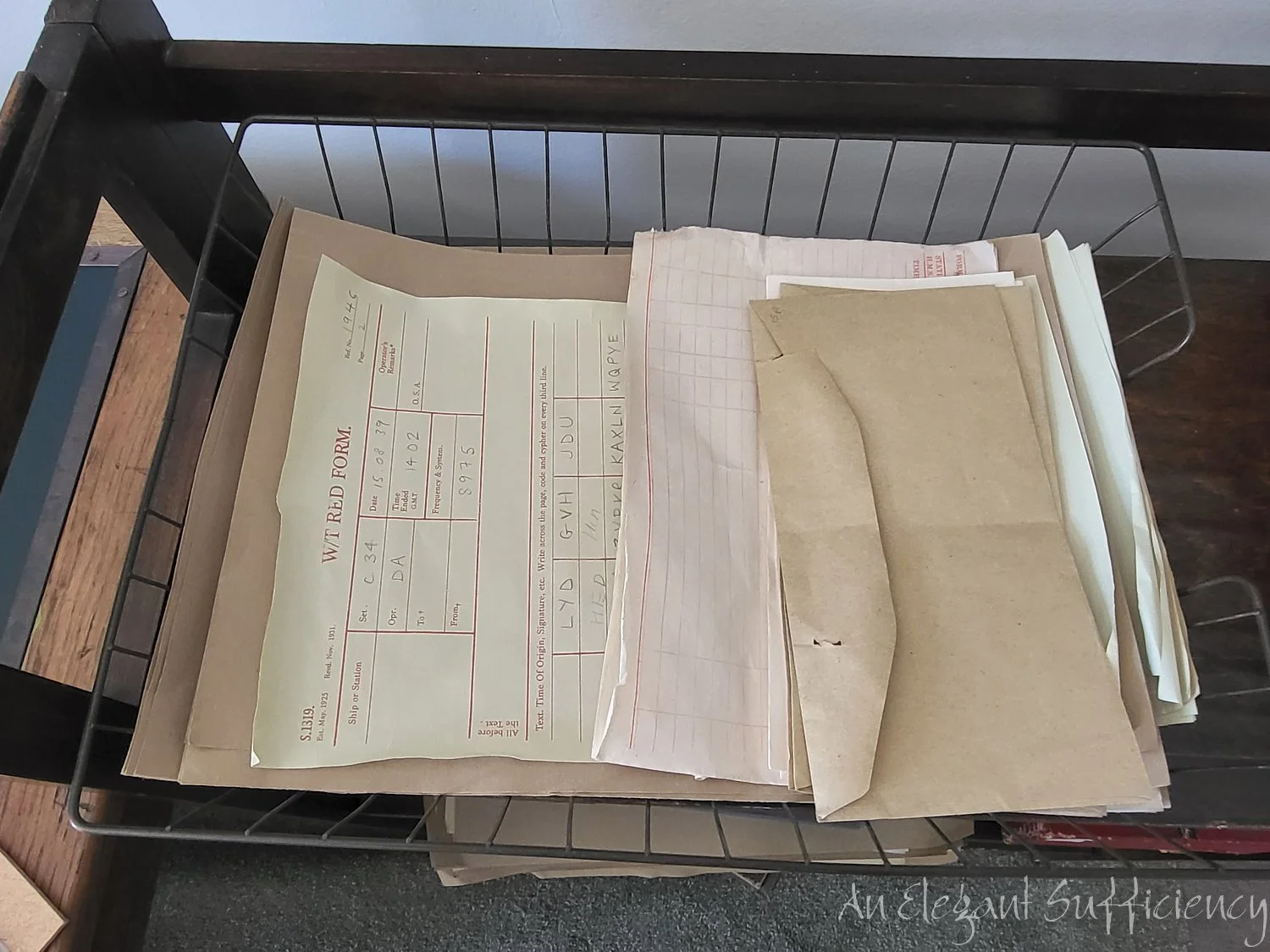Secrets
Having friends to stay is always fun and a great reason to explore some of the great places we have (almost) on our doorstep, even if some of them are already familiar to us. Or so we thought.
When we heard Tony and Olga had not visited Bletchley Park, once the top-secret home of the World War Two Codebreakers, we immediately added it to our list of “must see” places. The ticket system that offers repeat visits within twelve months of purchase meant that we’d been here twice before but still felt there was more to see (and to think about!) and we were just as keen to go there a third time. Previous blog posts can be found here and here by the way.
In the two or three years since we were last here, there have been a few changes, though the historically significant events which took place here continue to capture the imagination of new generations and it’s as popular as ever. Since we came here the first time, we’ve tried our best to work out how those complex puzzles were solved without a computer - maybe we’ll work it out this time?
Whilst the story itself does not change, the means of telling it must evolve. It’s important to present such important history to each new generation; one which might find it difficult to relate to different attitudes to gender, to the living and working conditions, enabling an understanding of how the “wartime spirit” built a community who applied their intellect and reasoning for the sake of the nation. Since our last visit, exhibitions have been redesigned, some of the huge machinery has been moved to other locations and where possible, parallels have been drawn between what went on here and how it informs the intelligence service today. Gradually we’re moving away from simply looking at objects in a museum towards learning of their relevance and how they continue to impact our lives.
Regular readers here will also know that I am sometimes more fascinated by the way in which historical information is presented than in the information itself. I am not someone who stands and reads densely printed detail; my eye is far more likely to be captured by oddments and ephemera, by handwriting and illustrations.
I very much liked the way we were encouraged to flip through folders and files here, then, finding out small snippets of information from handwritten reports filed at the time. The office scene was beautifully set, we were listening to Neville Chamberlain speaking on the radio as we browsed, noting the ashtrays and handbags by every desk - but one!
If I feel nostalgic about the filing trays filled with envelopes and handwritten forms (surely completed in triplicate with carbon paper?!) then how will such things appear to our children and grandchildren? Though all of the events which took place here were (just) within living memory, it must be an ongoing challenge to continually update the presentation whilst keeping the story and the artefacts intact. What a fascinating project in which to be involved!
In addition to learning about the whole process of cracking the codes, the story of the people who were here remains a primary interest and I had remembered how clearly a few of them featured in the exhibits. There were 9000 working here at the peak of activity, all sworn to secrecy, many of whom never spoke a word about the part they played long after the war had ended. Their story never palls, their words describe life here so well. I sat and listened to former members of the WAAF speak about their life here, how they were billeted with local families and just “got on with it”. A new exhibition The Intelligence Factory goes one step further in terms of interactivity and we all found it more interesting to participate in learning about what went on here than to simply stand and look at objects in glass cases.
Just as we were chatting about the fact that not everyone here had been a codebreaker; that there had been cleaners and cooks and people who cut the grass as well, we turned the corner and there was a list!
Just as before, though, it really can’t be done in one visit. Sooner or later, my brain says “enough” ! Once again, I tucked my ticket away safely, ready for next time. As I did, I noticed a sweet coincidence…
My ticket was the one with the picture of Alan Turing’s Teddy, Porgy on it! Though I didn’t see Porgy on this visit, I did come across an interesting article about Turing, his bear and the role of museums which is worth a read, especially since we reach the same conclusion!


















